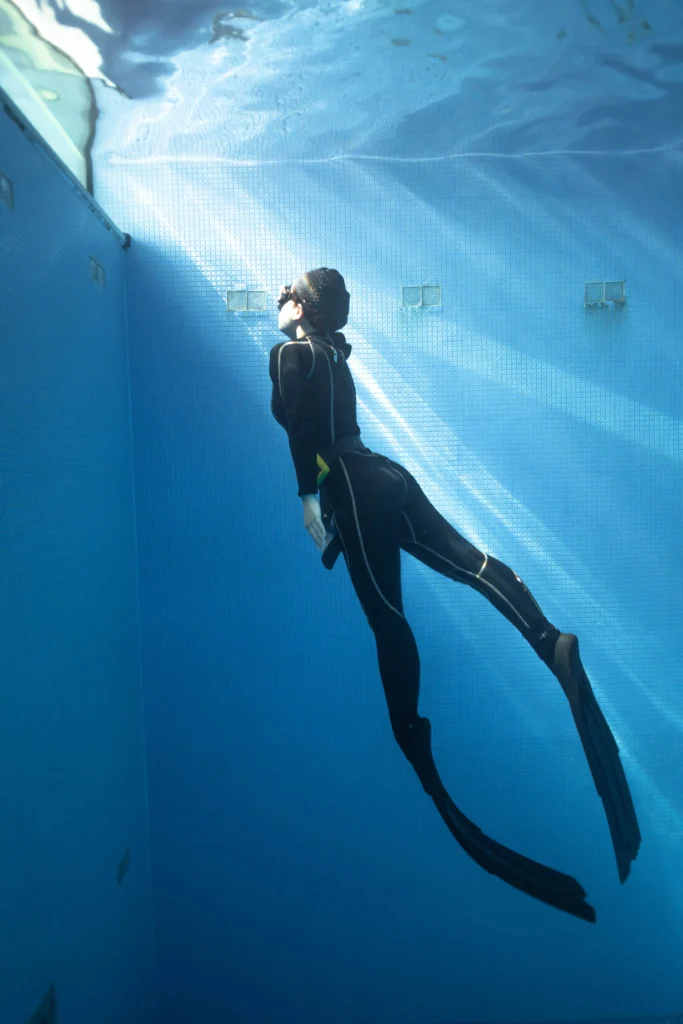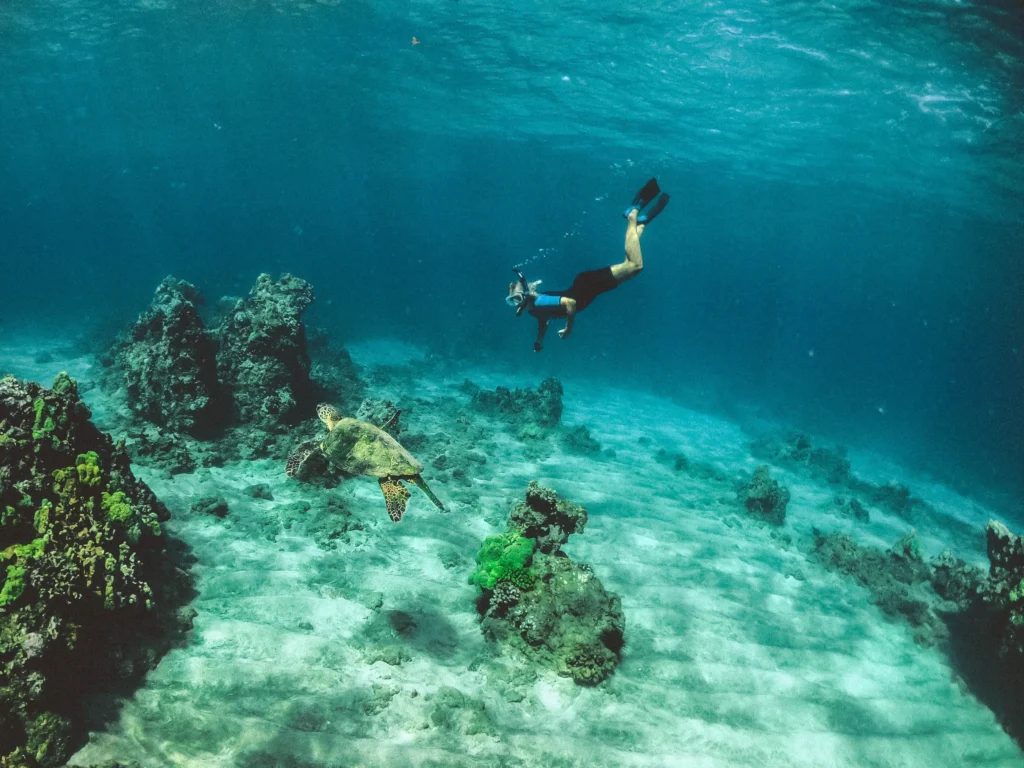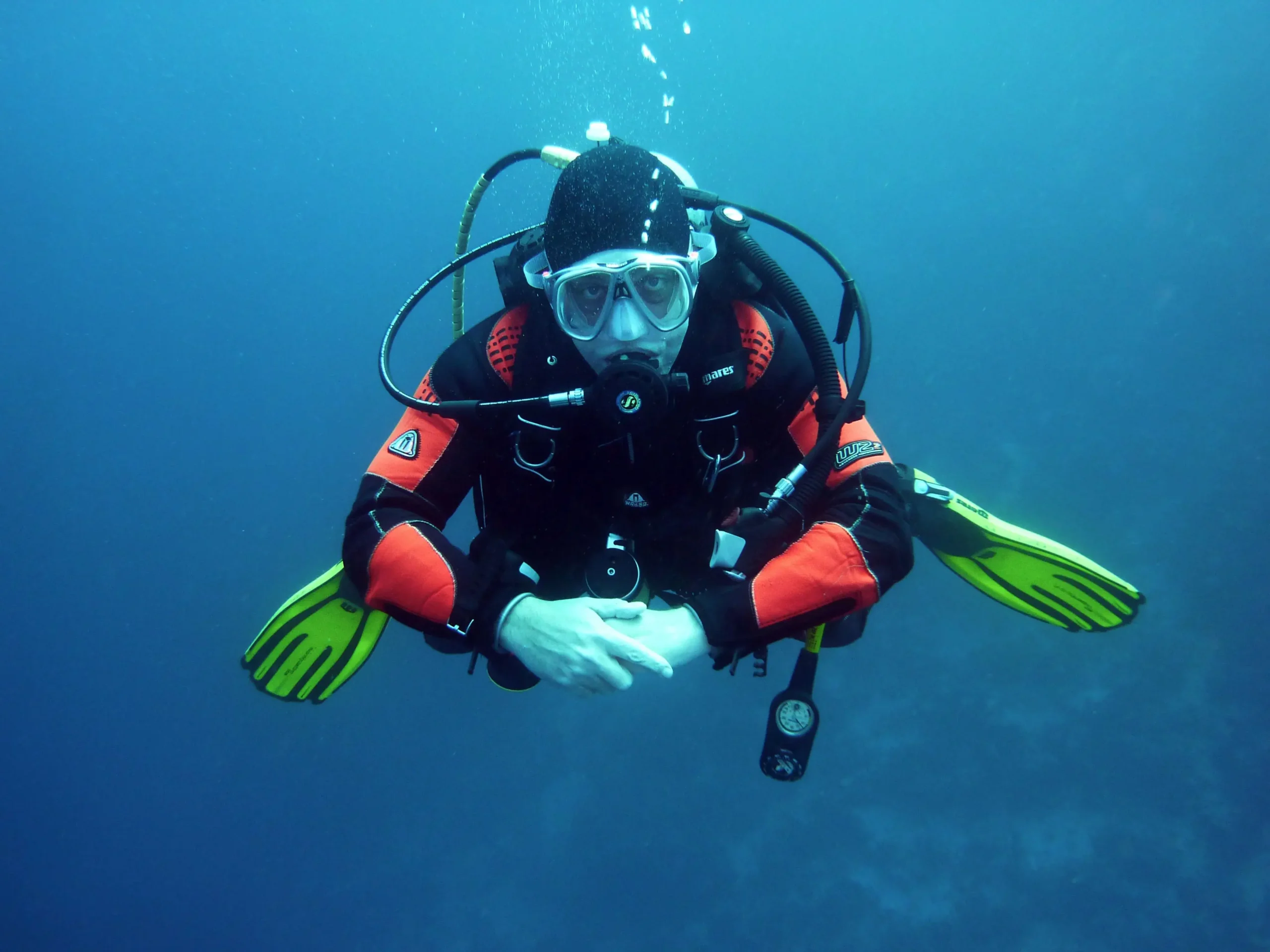When gearing up for cold water diving adventures, what exactly keeps a dry suit sealed and the diver warm in frigid conditions? Dry suits utilize complex layering and adjustable valves so divers stay insulated, buoyant, and dry.
Insulating underwear preserves body heat while outer shells with high-tech gaskets prevent water entry at wrists, neck, and ankles. Suit valves manage buoyancy by regulating air, ensuring comfort in extreme conditions.
Read on as we detail the cutting-edge materials and clever physics principles that allow divers to safely explore the coldest ocean depths.
What is the Mechanism of Dry Suits?
Dry suits are essential gear for divers and water sports enthusiasts, keeping them dry and comfortable in cold waters. Let’s know about their construction to understand how they work.
1. Layers and Materials Used
Dry suits consist of multiple layers crafted from specialized materials. These layers typically include:
- Outer Shell: Made of durable materials like nylon or tri-laminate fabrics to resist abrasions and keep water out.
- Waterproof Membrane: Often Gore-Tex or similar breathable materials, allowing moisture to escape while preventing water from seeping in.
- Insulation (Optional): Some suits have additional layers for insulation, ensuring warmth in frigid waters.
These layers work together, creating a barrier against water while allowing the body to breathe, and maintaining comfort during prolonged use.
2. Sealing Mechanisms: Seals and Zippers
The effectiveness of a dry suit lies in its seals and zippers, crucial for maintaining a watertight enclosure. Key components include:
- Neck and Wrist Seals: Usually made of latex or silicone, these snugly fit around the neck and wrists, preventing water entry.
- Booties or Socks: Attached or integrated into the suit to cover the feet, ensuring a watertight seal with diving boots.
- Zippers: High-quality watertight zippers, often made of plastic or metal with specialized coatings, provide easy entry and exit while preventing water ingress.

Functional Components
1. Valves and Their Roles
Valves are pivotal for managing air within the dry suit, ensuring proper buoyancy and comfort. Types of valves include:
- Inflation Valves: Used to introduce air into the suit, regulating buoyancy and allowing adjustments underwater.
- Exhaust Valves: Positioned strategically to release excess air, maintaining proper buoyancy and preventing over-inflation.
These valves enable divers to fine-tune their buoyancy levels, enhancing their diving experience.
2. Entry Systems: Zipper Types and Configurations
The entry system of a dry suit varies based on zipper types and configurations, influencing ease of use and watertightness. Common zipper types include:
- Diagonal Front Zippers: Easy to access and seal securely, often preferred for their reliability.
- Shoulder Entry Zippers: Providing a wider entry point, facilitating easier donning and doffing.
Configurations like front entry, rear entry, or shoulder entry cater to diver preferences, offering convenience without compromising on waterproof integrity.
What is the Operational Functionality?
A dry suit’s operational functionality keeps the wearer dry by sealing out water while providing insulation and thermal protection.
Principles Behind Dryness
Dry suits operate on simple yet effective principles to keep users dry, even in cold and wet conditions.
1. Mechanism of Keeping the User Dry
Dry suits create a barrier against water by using specialized materials and layers that prevent water ingress.
The waterproof membrane, typically made of Gore-Tex or similar breathable fabrics, acts as a barrier to external water while allowing moisture from sweat to escape.
This keeps the user dry by preventing water from seeping into the suit while allowing perspiration to evaporate.
2. Role of Insulation and Thermal Protection
Insulation in dry suits serves a dual purpose. It not only keeps the user warm in cold waters but also aids in maintaining the effectiveness of the waterproof barrier.
Also, insulation layers trap body heat, preventing rapid heat loss in frigid environments, and ensuring the user stays comfortable throughout the dive.
Buoyancy Control and Its Connection to Dry Suits
Buoyancy control is integral to diving, and dry suits play a significant role in managing buoyancy levels.
1. Air Management Systems
Dry suits incorporate air management systems using valves to regulate the amount of air inside the suit. Inflation valves allow divers to add or release air as needed, maintaining neutral buoyancy underwater.
Excess air is expelled through exhaust valves, ensuring proper buoyancy control without the need for additional weights.
2. Influence on Diver’s Movement
The buoyancy achieved with dry suits impacts a diver’s movement underwater. Properly managed buoyancy allows for effortless movement, enhancing maneuverability and control.
It enables divers to maintain a streamlined posture, conserving energy and facilitating smoother navigation through water currents.
Mastery of these operational functionalities ensures a comfortable and safe diving experience, even in challenging underwater conditions.
Diving into Practical Usage
Dry suits aren’t just gear; they’re versatile companions, amplifying comfort and safety across various water activities.
In diving:
- Scuba diving benefits from dry suits in cold waters, preserving warmth and ensuring a dry experience.
- Free diving enthusiasts find dry suits useful for surface intervals, keeping them warm while waiting between dives.
Beyond diving, dry suits serve in other water sports:
- Kayaking, paddleboarding, and sailing are enhanced by dry suits, shielding users from water exposure.
- Professions like search and rescue, scientific diving, and commercial diving rely on dry suits for comfort and protection during extended periods in water.
Factors Influencing Performance
- Maintenance and Care:
- Regular rinsing and proper storage extend the life and effectiveness of dry suits.
- Inspecting seals, zippers, and valves ensures continued waterproof integrity.
- Customization Options for Specific Needs:
- Tailoring suits to individual measurements enhances comfort and usability.
- Optional add-ons like pockets or reinforced knee pads cater to specific activities or preferences.
How maintenance and customization impact performance empowers users to make the most of their dry suits, ensuring durability and comfort in any aquatic pursuit.

Safety Considerations and Risks
Safety is paramount when engaging in any water activity and understanding the risks associated with dry suit diving is crucial.
Potential Risks and Mitigation Strategies
- Understanding Risks Associated:
- Risks include buoyancy issues, equipment failure, and hypothermia.
- Awareness of these risks aids in proactive prevention.
- Safety Measures and Best Practices:
- Regular equipment checks and proper maintenance mitigate risks.
- Monitoring air levels and practicing buoyancy control enhances safety.
Training and Certification Importance
- Relevance of Proper Training:
- Training imparts knowledge of equipment use and risk management.
- It teaches safety protocols and emergency procedures for swift action.
- Certifications and Skill Enhancement:
- Certifications validate competency and ensure skill proficiency.
- Continuous skill enhancement through further training enhances safety awareness and preparedness.
FAQs
Do you wear anything under a drysuit?
Yes, typically, you wear insulating undergarments like fleece or thermal layers for warmth and comfort.
Do you still get cold in a dry suit?
In cold waters, proper insulation and layering under a dry suit help, but prolonged exposure can cause discomfort.
Can you swim in a drysuit?
Yes, drysuits allow swimming; they provide buoyancy and keep you dry while offering flexibility for movement.
Why are drysuits so expensive?
The cost reflects specialized materials, construction, waterproofing, and technology required for their functionality and durability.
Are drysuits fully waterproof?
Yes, when properly maintained and sealed, dry suits create a waterproof barrier against external water.
How long do drysuits last?
With proper care and maintenance, dry suits can last anywhere from 5 to 10 years, depending on usage and care.
Wrap-Up
Dry suits employ advanced materials and design to create a waterproof barrier, ensuring comfort and safety in cold waters. Buoyancy control, insulation, and maintenance play key roles, empowering users across various water activities while emphasizing safety and durability.




